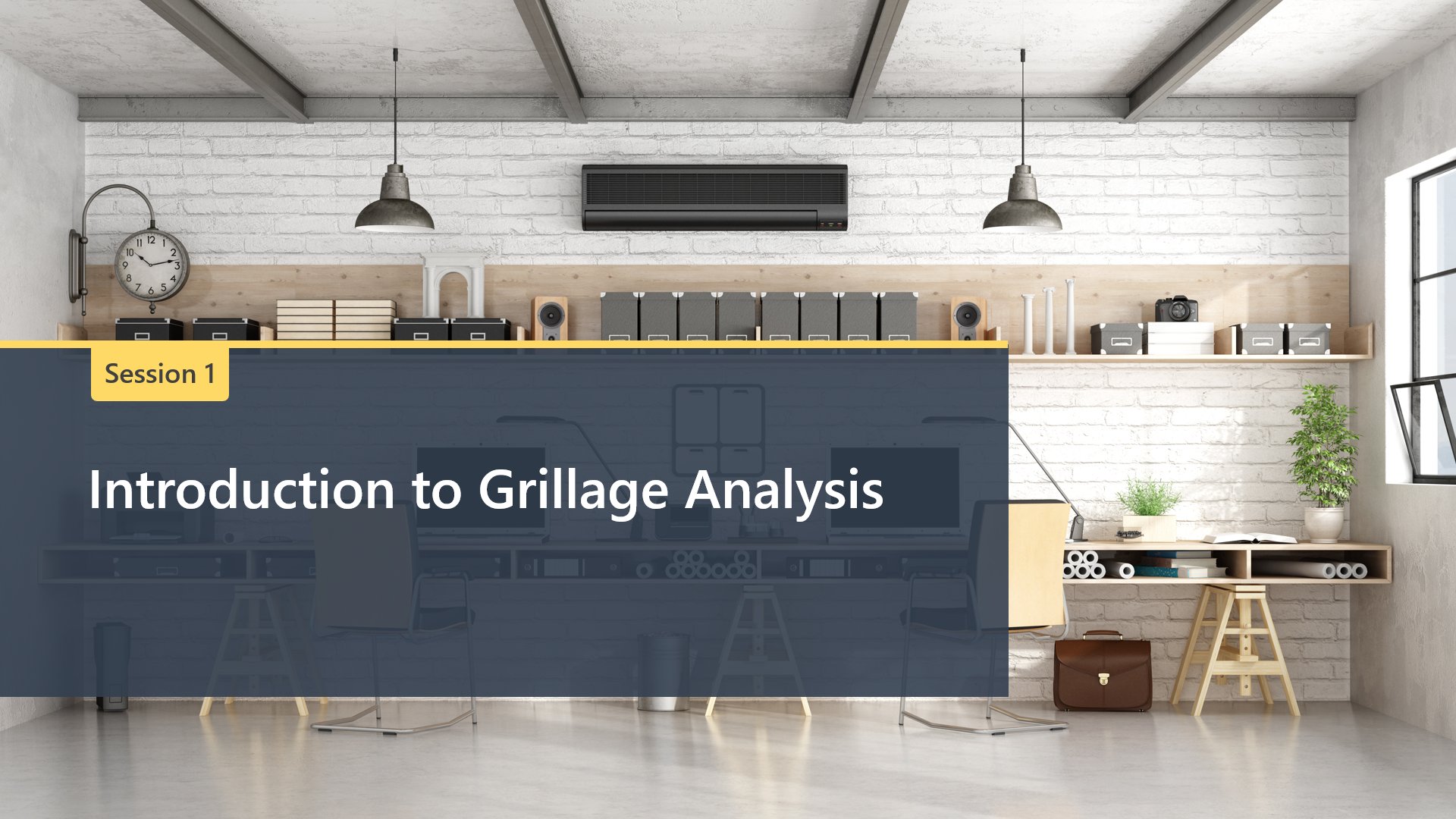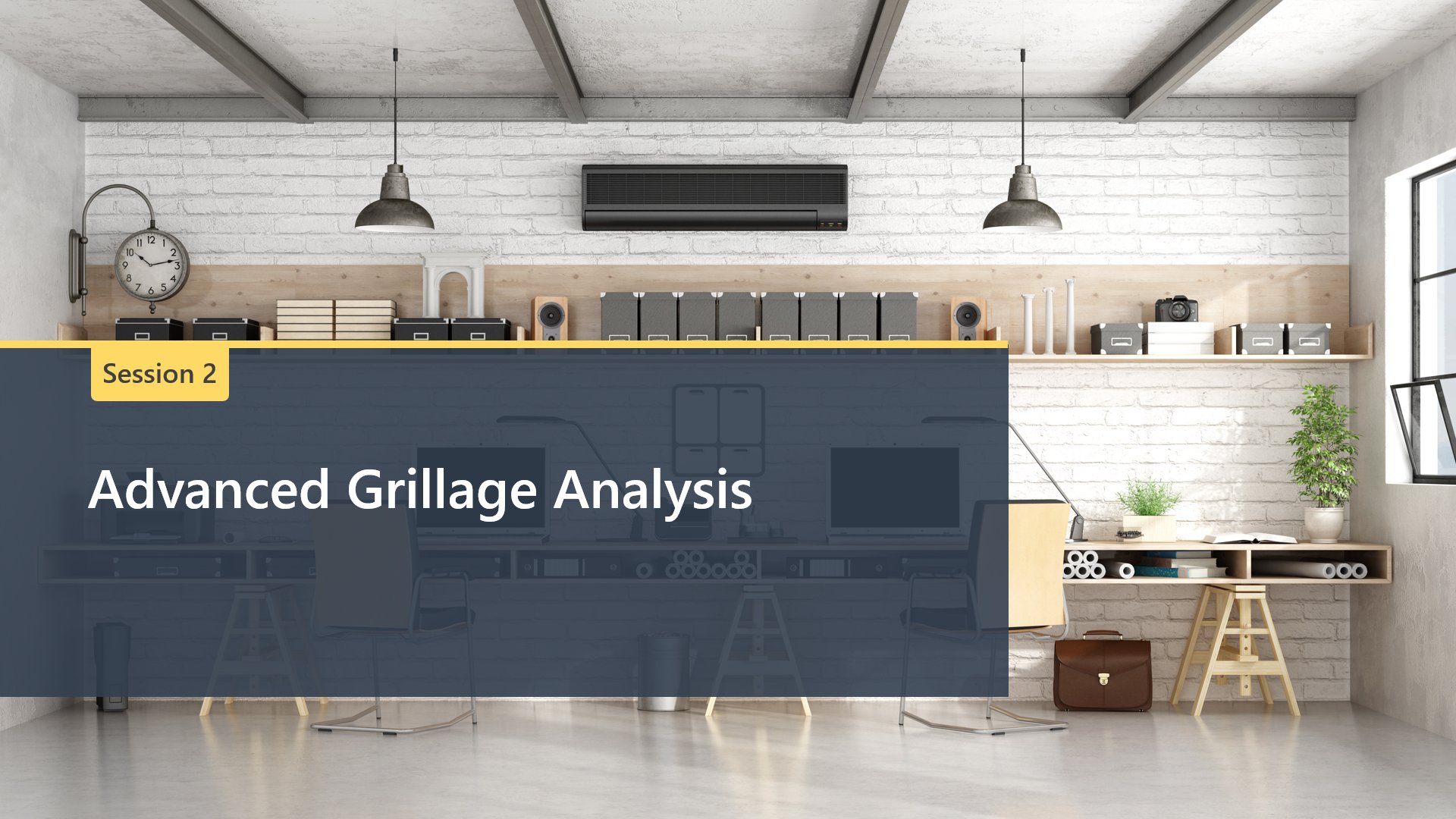Online training information
| Sessions
presented using |
Session
length |
After
session offline self-study required |
Training
certificates |
| GoToWebinar |
90 to 120 minutes |
45
to 60 minutes |
Issued
on successful completion |
Notes
-
Training sessions
are provided using the GoToWebinar
web conferencing facility. You can join each training session up to 10 minutes before the scheduled start
time. They will start promptly.
-
Training sessions
are a mix of PowerPoint presentation and live demonstration
of LUSAS.
-
Delegates do
not undertake any hands-on examples during each session, but examples that cover the concepts introduced are provided for download and use by
delegates after each session. These examples will take between 45 and 60
minutes of offline self-study to complete. Email support is available from the
lecturer to assist with these examples if needed.
-
Session
presentations can be downloaded from a training course event page
and printed off if required.
-
Delegates
are able to ask the lecturer
questions during the training session via the chat tool or afterwards via email.
-
Sessions
are recorded and links to recordings will be provided to
delegates to allow viewing if a session is missed.
-
Training
certificates are provided to those who successfully complete the
series of worked examples and pass the quiz set after each
session.
-
Registration
for Session 1 is a requirement to attend all
subsequent sessions.
LUSAS software version
LUSAS version 20 will be used to
present this course and is also required to undertake any offline
homework examples.
Accessing LUSAS
Individuals who wish to attend the
training who do not have access to the required version of the
software may request a
temporary training licence from LUSAS to allow the running of the
software on their personal computers. After
booking your place on the course, please
contact training@lusas.com
to request a licence stating your name and details as asked for on
the booking form.
Downloading LUSAS
LUSAS may be downloaded either as an
ISO file, or as a small startup executable. Use whichever is better or works for
you.
| Options
for downloading LUSAS Version 20
|
| ISO file
|
OR |
Web
installer
|
| Download a
single disk image file containing all installation
components.
Select this option for offline installation on one or more
PCs. |
Download a
small setup executable which allows you to choose those
components that you wish to download and install.
Select this option for online installation on a single PC.
|
|

|

|
Please contact onlinetraining@lusas.com
if you have any questions relating to the licence key sent to you.
Typical Course Content
Session 1 -
Introduction to Grillage Analysis
 Learn
how to undertake a simple grillage analysis with the use of basic examples not
complex theory. Learn
how to undertake a simple grillage analysis with the use of basic examples not
complex theory.
- Overview of the basic concepts of grillage
analysis (layout, dimensions, spacing, skews, etc).
- Efficient data preparation focusing on section
properties.
- Use of multiple analyses to consider short and
long term properties.
- Effective application of highway or rail
traffic loads.
- Presentation and homework example: Concrete
slab deck with highway traffic loading.
- Online quiz to complete the session.


|
Download session handouts (when made
available)
|
Back
to top
|
Session 2 - Advanced
Grillage Analysis
 Having
gained basic knowledge of grillage analysis, this session will provide details
on how to analyse more complex structures. Having
gained basic knowledge of grillage analysis, this session will provide details
on how to analyse more complex structures.
- Building on session one, more complex bridge
structures, such as multi-span composite bridges and box bridges will be
discussed, covering how they can be modelled.
- When grillage analysis is appropriate and when
limitations would require more advanced analysis
- How to incorporate bracing into the grillage
model.
- Understand how to efficiently consider and
incorporate a staged consruction process into the analysis model
- Presentation and homework example: Multi-span
composite bridge with bracing.
- Online quiz to complete the session


|
Download session handouts (when made
available)
|
Back
to top
|
 Tell us what you thought Tell us what you thought
When you have completed the
course, help us to assess it and plan future online training courses.
|
Back
to top
|
|